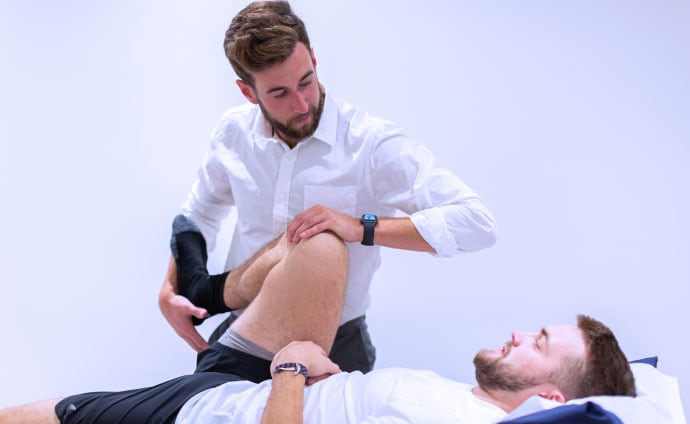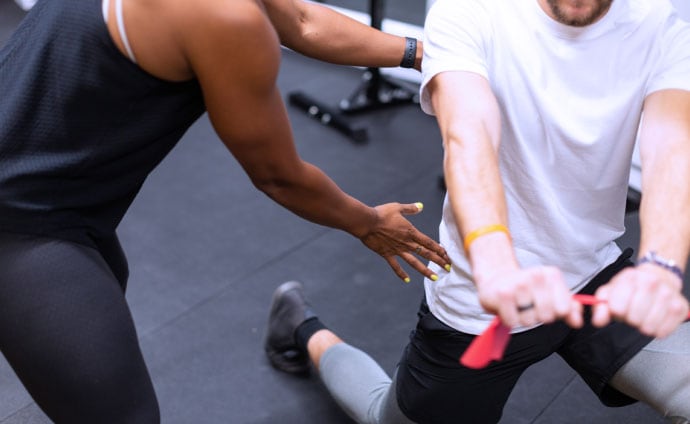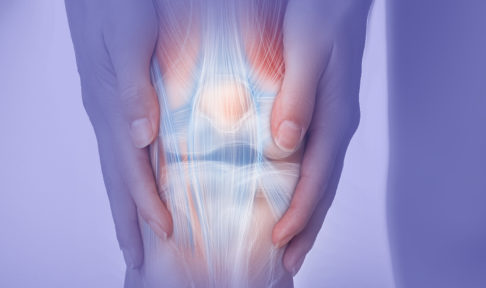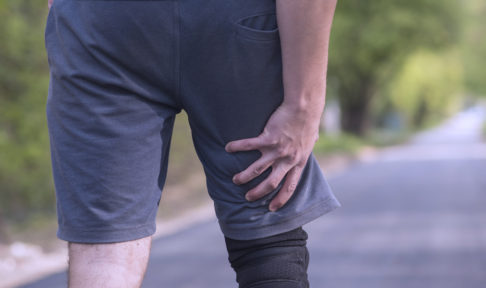While running is excellent for your health and fitness, it is a high impact type of exercise, which can result in a bit of wear and tear on your body. Runners often find themselves with injuries, which can be related to anything from poor technique, training too much too quickly, or even the wrong type of footwear.
There are some conditions that are more than just a niggle, and should be treated immediately by a professional physio to avoid long-lasting damage and a prolonged period of time where you can’t run at all. To find out more about the difference between a running injury vs a running niggle, check out our previous article.
These are the three most common running injuries we encounter at Spectrum, and how we would normally treat them (keeping in mind that every patient will be given a personalised treatment plan after a thorough assessment of their specific condition).

1. Anterior knee pain
- What causes it?
Anterior knee pain in runners often occurs when the kneecap isn’t tracking correctly within the groove of the knee joint, resulting in pain to the front and centre of your knee. This can be caused by a number of things, from poor alignment due to strength or tightness imbalances through to referred pain from the IT band, hip or thigh.
- Common treatments
Firstly, we assess all patients to determine the cause of their anterior knee pain. Then, subject to what the assessment shows, we would normally treat this condition with a combination of manual release therapy to help correct any imbalances and our unique GameReady Ice Compression unit to reduce inflammation. If we find the issue is being caused by a lack of strength in the buttocks or thigh, we might also prescribe guided exercise therapy in our customised gym at our London clinic. Sometimes we will also ask patients to wear a TENS machine while performing their exercises, to help their muscles and nerves to re-train as they work out.
2. Shin splints
- What causes it?
Shin splints are a non-serious but painful condition, where runners might feel a sharp pain in the front of their shin bone. It’s not entirely known what causes shin splints, but it can often be attributed to an alignment issue. This is where assessment by a professional physio becomes extremely important.
- Common treatments
If shin splints are severe, simply resting and avoiding running for a while may be the best course of action. Getting different running shoes that have higher arch support is sometimes recommended, depending on where the alignment issues are stemming from, as they could be coming from below (poor posture in your feet) or above (poor alignment in your upper leg or even hip). `
A TENS machine can be used to decrease the tightness and reduce pain in this instance, as opposed to being used for activation as in the case of anterior knee pain. But ultimately a lot of the treatment for shin splints will revolve around improving the biomechanics of the patient’s running style, which is where a gait assessment comes into play.
Gait assessments allow a physio to see how a patient’s foot strikes the ground, as well as how the rest of their body moves when they run, and using the latest technology, analyse any imbalances that need to be corrected to improve the efficiency of the running style. It’s also a great way to check other treatments to improve the running style have translated.

3. Lower back pain
- What causes it?
Lower back pain in runners is normally caused by poor running technique of some description. However, it can always be linked to the individual’s general posture, especially if they are seated for the majority of their time. If someone gets up to go for a run after sitting at a desk all day, they may already have poor posture and running simply exacerbates the damage that has already been done – they just can’t feel it until they get moving.
Additionally, people with a long, natural stride will often put more impact through their body in the form of vibrations through their legs into their back, which can cause pain.
- Common treatments
Form correction is normally needed in the case of lower back pain in runners. While the poor form might relate to the person’s running style it could also be broader postural corrections that are required.
In this instance, a TENS machine, dry needling and manual therapy can all be used to reduce tension and manage pain. And, as with most other running injuries, a gait assessment as a diagnostic tool is always a good idea.
In an ideal world, new runners would prevent these injuries occurring from the beginning of their training by seeking proactive treatment and advice before they get started. The physios at Spectrum are always happy to offer gait and form assessments, to help set a foundation for new runners or athletes returning from time off after an injury.
Are you a runner that has experienced one of these issues? Or are you a running wanting to make sure your technique is on track in an effort to avoid future injuries?
Simply get in touch with us to lock in a gait assessment and form analysis today.



